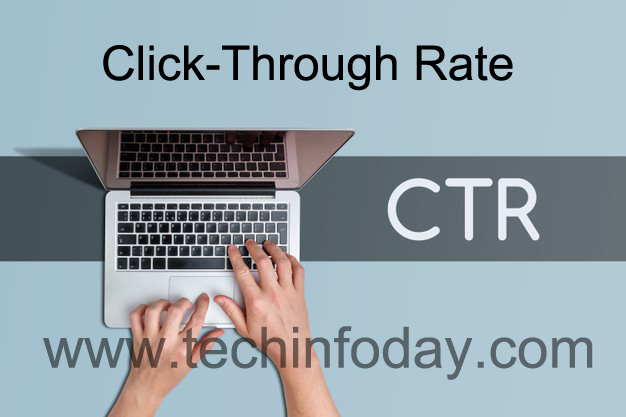Table of Contents
What is the click rate (CTR)?
The click-through rate (CTR) is the ratio of the number of clicks on a particular link or call-to-action (also known as CTA, z about the number of times the link was accessed (also known as the number of impressions) ).
Here is a simple click rate formula:
For example, if 100 people see an ad online and five people click on it to learn more about the product, that ad has a CTR of 5%.
The CTR can be used to measure the success of pay-per-click (PPC) search results (e.g., with Google AdWords or other search engines), CTAs on a landing page, or hyperlinks in blog posts and marketing campaigns. Marketing. Marketing. E-mail.
Why CTR is important
The CTR is an important metric as it helps you understand your customers For example, a low CTR could indicate that you target the wrong audience or not speak their language convincingly enough to make them click.
Let’s take the example of a paid search campaign that drives people to your website, eCommerce store, or landing page. An online ad’s click-through rate shows you how effectively the ad is attracting potential customers. You can then compare your ad text, ad position, and calls-to-action to see which one has the highest CTR.
What is a good CTR?
The CTR varies between industries. To determine what a good click-through rate would look like for your company, you can first research the average click-through rates in your industry. Once you understand the existing benchmarks and industry averages, you can take steps to achieve higher CTR and meet your business goals.
tips to improve your CTR
There are several factors to consider when trying to increase CTR across different channels of digital creation. How you increase the CTR depends on where you want to increase the CTR.
For example, if you have a low click-through rate on a social media channel like Facebook or Twitter, consider which hashtags can help increase your reach with your target audience. And when you’re trying to increase a PPC ad’s click-through rate, it’s important to pay special attention to your headline and text.
Here are four tips to keep in mind when trying to improve CTR:
Optimize your title and copy:
Use a focus keyword or two in your title and copy it over. Then, address your audience’s emotions and needs – solve a problem for them.
Include CTA:
Write a direct and compelling call to action. Your call to action should be engaging and encourage your audience to click.
Using images is a great way to increase CTR. However, depending on the marketing channel, different types of images may work better than others. Therefore, a / B test different types of images to see which one works best for your business.
Try the hashtags:
Hashtags work on multiple platforms like Facebook, Twitter, and LinkedIn. Research trending or popular hashtags in your industry and use hashtags that relate to the rest of your text to increase the chances of being seen by your target audience.
Market to your ideal customers for better conversions (not just high CTR)
Clicks and conversions are not the same: CTR tells you the percentage of people who click, but not the total number of people who have converted (for example, made a purchase or signed up for your newsletter). In other words, an online ad can have a high CTR with a very low conversion rate, resulting in a high cost per conversion (CPC).
So how can you ensure that the people who click on your ads continue their customer journey to conversion? First, you focus on your ideal clients.
Ideal customers are those who would benefit the most from what your company has to offer. They are likely to keep coming back if you treat them right, and they form the backbone of your customer base, so of course you want to target them with your advertising.
You can find out who these people are and what they want from a company like yours by doing a little research and creating user personalities.
Create data-driven user personas
A user persona is a semi-fictional character based on demographic and psychographic data about the people who purchase your products.
A simple user person answers the following questions:
Who are your clients?
What is your main objective?
What prevents them from getting what they want?
The following tools can help you answer these questions to tailor your posts to your needs to overcome your objections and get real conversions.
The surveys on the page can help you find out who your customers are and what problem they are contacting you to solve. Look for details like “office manager managing office supplies and invoices for 100+ colleagues” that speak volumes about your perspective when choosing and using your product.
Pro Tip: Consider asking clients directly about the change. Here’s how you discover objections that could prevent similar customers from buying.
Customer Interviews: Sit down with paying customers (or do it virtually over the phone) and dive into their heads. Ask them to tell you when they first decided to look for a solution that solves your product or service and let them talk. Customer interviews don’t give you hundreds of data points like surveys do, but they tell you about needs and factors that you never knew existed.
Once you know exactly who your customers are, what they want, and what’s stopping them from getting it, you can start creating ads that will attract and convert your ideal customers.

